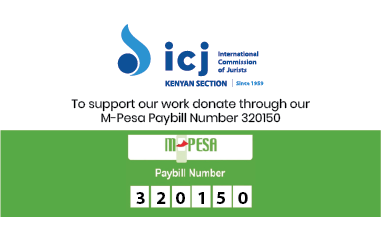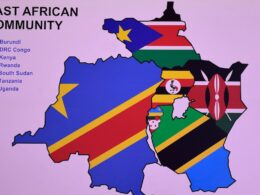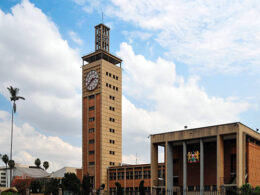NAIROBI,Kenya – An independent judiciary underpins the separation of powers. Until recently, Kenya’s executive arm held sway over the judiciary. In part, this was because the executive appointed the members of the Judicial Service Commission (JSC) which controlled the hiring, promotion, and transfer of judges. The executive also controlled the judiciary’s budget.
As such, the courts were complicit in Kenya’s undemocratic slide, often allowing detention without trial, repression of political opposition, electoral injustice, torture and other violations to continue unabated. Between independence and the 2010 Constitution, the government punished individual judges and magistrates who fail to fulfil its wishes as the courts ruled consistently in favour of the ruling party and its supporters in political interest and corruption cases.
It was intentional for the 2010 Constitution to put checks and balances on executive and legislative excesses. Some fundamental political changes, such as those touching on devolution, the territory of Kenya, supremacy of the Constitution, the independence of the judiciary and constitutional commissions, presidential term limits and legislative powers, were deliberately ringfenced by requiring a referendum. For other matters, a two-thirds majority would be needed in both houses after rigorous public participation.
The political class used their election victory as legitimacy to rule over Kenyans, even when their policies violated the Constitution. There have been times when fundamental constitutional amendments that would transform Kenyan lives were implemented without reference to Kenyans’ opinions or wishes. In 1982, Kenyans found themselves under a one-party state following a constitutional amendment that introduced Section 2(a). The act was done in Kenyans’ name, but they had nothing to do with it, didn’t ask for it, and would suffer as a result.
Public participation in all levels of government is one of the transformative features of the 2010 Constitution. Public participation is listed as a national value and principle of governance in Article 10. Likewise, Articles 35, 33, and 34 provide a right to access information held by the state and freedom to seek, receive, and impart information and a free press.
By participating in public affairs, citizens and stakeholders can influence decisions, policies, and legislation and provide oversight for service delivery, development, and governance. As we have seen several times, any law or development project that fails to incorporate public participation will likely be quashed in court. We are no longer under the reign of “government knows best.” Instead, the Constitution contemplates continuous dialogue and information provision to the people as we do things in their name.
The Constitution has expanded the right of a party to bring an action (locus standi). Members of groups, classes of people, or interest groups can also file matters on behalf of others. As a result of the suits, several government initiatives have been halted, including the privatisation of parastatals, the hiring of 50 chief administrative secretaries, the proposed new digital identity scheme “Maisha Namba”, the deployment of Kenya police in Haiti, the directive on logging, and the Housing Levy.
This is not new; various projects were similarly slowed down or halted during the Uhuru Kenyatta regime, including the BBI, which proposed sweeping constitutional changes, some parts of the Security Laws Amendment Act, and 23 laws passed without Senate involvement.
Perhaps it is time to interrogate why Parliament and the executive continue neglecting public participation as required by law, rolling out programmes without guidelines, rushing laws and failing to learn from past mistakes. Maybe at the heart of this is a refusal by Parliament and the executive to let go of perks and powers from a previous dispensation.
The writer, Demas Kiprono is the Ag. Executive Director ICJ Kenya.











